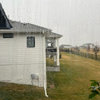installation ( new construction )
mark101
11 years ago
Related Stories

GREAT HOME PROJECTSHow to Install Energy-Efficient Windows
Learn what Energy Star ratings mean, what special license your contractor should have, whether permits are required and more
Full Story
BATHROOM DESIGNShould You Install a Urinal at Home?
Wall-mounted pit stops are handy in more than just man caves — and they can look better than you might think
Full Story
EARTH DAYHow to Install a Green Roof
Covering a roof with low-maintenance plants has benefits beyond just beauty. Get the details here
Full Story
FENCES AND GATESHow to Install a Wood Fence
Gain privacy and separate areas with one of the most economical fencing choices: stained, painted or untreated wood
Full Story
MATERIALSThe Most Popular Roofing Material is Affordable and Easy to Install
Asphalt shingles, the most widely used roof material in the U.S. are reliable and efficient, and may be right for you
Full Story
REMODELING GUIDESRanch House Remodel: Installing the Interior Finishes
Renovation Diary, Part 5: Check in on a Florida remodel as the bamboo flooring is laid, the bathroom tiles are set and more
Full Story
REMODELING GUIDESFinishing Touches: Pro Tricks for Installing Fixtures in Your Tile
Cracked tile, broken drill bits and sloppy-looking fixture installations? Not when you follow these pro tips
Full Story
KITCHEN COUNTERTOPSWalk Through a Granite Countertop Installation — Showroom to Finish
Learn exactly what to expect during a granite installation and how to maximize your investment
Full Story
DOORS5 Questions to Ask Before Installing a Barn Door
Find out whether that barn door you love is the right solution for your space
Full Story
ARTWitness a Fantastic Chihuly Glass Sculpture Installation
Ever wonder what goes into a design that includes a major — and highly breakable — artwork? Here's your chance to find out
Full StoryMore Discussions









Windows on Washington Ltd
Epiarch Designs
Related Professionals
Denver Window Contractors · Eagle River Window Contractors · Emeryville Window Contractors · Lakewood Window Contractors · Coconut Grove Window Contractors · Jensen Beach Window Contractors · Sugarland Run Window Contractors · Little Egg Harbor Twp Interior Designers & Decorators · Great Falls General Contractors · South Windsor General Contractors · Valley Station General Contractors · Buffalo Carpenters · Maple Valley Carpenters · Mountain Home Carpenters · Ridgewood Carpentersmark101Original Author
Windows on Washington Ltd
mark101Original Author
Epiarch Designs
mark101Original Author
Windows on Washington Ltd
WindowDog
Windows on Washington Ltd
mark101Original Author